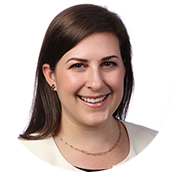CT-Guided PCI Coming Soon to a Cath Lab Near You—If Not There Already
A joint SCCT/SCAI panel reviewed many opportunities for CT to enhance procedural planning and foster multidisciplinary care.

MONTREAL, Canada—Using computed tomography (CT) to help guide PCI is no longer just a pipe dream but rather a strategy that’s already practiced in some settings and likely to arrive at many more cath labs in the ensuing years, according to experts in a dedicated session at the 2025 Society of Cardiovascular Computed Tomography (SCCT) meeting.
“CT for a long, long time has been thought of just as a diagnostic tool, . . . like the gatekeeper to the cath lab,” session co-chair Yader Sandoval, MD (Minneapolis Heart Institute, Abbott Northwestern Hospital, MN), told TCTMD. Now, it’s shifted to where CT can provide data to aid with procedural planning. “This will not necessarily be news for people that do structural interventions, but for many of us that do PCI, this is actually something very unique and transformative.”
Better software and hardware, backed by data supporting their use, are now available to make this happen “at the right place and the right time,” said Sandoval, who served as the lead author on a recent expert opinion paper in JSCAI outlining how coronary computed tomography angiography (CCTA) can improve PCI planning.
While the “old dogs can’t learn new tricks” adage might apply to some veteran cardiologists, session co-chair Koen Nieman, MD, PhD (Stanford University, CA), said the biggest potential lies with more of the up-and-coming physicians who have been trained to use CT from the beginning.
“Particularly the new generation of interventional cardiologists [have been] brought up with a very good understanding of CT imaging, being able to work on the workstations and prepare the images that they need and they can use in the cath lab,” he said, adding that logistics and access, as well as post-processing tools, still need improvement. “It’s critical to have the right technology to do this [and] to acquire the images.”
Opportunities and Limitations
During the SCCT/Society for Cardiovascular Angiography and Interventions (SCAI) joint session, Jonathon Leipsic, MD (University of British Columbia, Vancouver, Canada), who discussed lessons learned with CT in TAVI planning, urged all clinicians involved “to speak the same language.” For example, he said, “calcium, to me, is very different than calcium to [other doctors], and I have to appreciate what it is they need as it relates to no longer adjudicating the severity of stenosis, but to really help inform their procedural planning.”
Additional lessons learned from the TAVI field include having reproducible measurements, increasing operational efficiency, and understanding the drawbacks of CT. “We need to not only be intoxicated by our opportunities, but understand, of course, our limitations,” Leipsic said.
In his talk, Sandoval pointed to calcium as one of the “major opportunities” where CT planning can improve PCI outcomes. This represents a shift as calcium has been previously thought of as something hampering successful reading of CTs, but now “this is the number one piece of information that we care about the most because this changes the procedure from a regular, straightforward procedure to a very complex procedure,” he said. Cross-sectional data, and other tools, can now provide more detailed information about coronary calcium, though many of these are still investigational.
Artificial intelligence (AI) is going to be a major driver of improvements in this space in the coming years, with software used to detect chronic total occlusions (CTOs), say, as well as provide intraprocedural guidance, Sandoval added.
One of the real positive features about CT is you can plan . . . and then you arrive in the cath lab and powered with information. Robert Safian
Technology like near-infrared spectroscopy (NIRS) as well as virtual stenting can enhance PCI planning, too, whether or not that’s in conjunction with CT, according to Robert Safian, MD (Corewell Health, Royal Oak, MI). The most helpful information to know in advance relates to stenosis severity, ischemia, and extent of disease, including vulnerable plaque and calcium, he said.
“All of these things can be done by CT, but they can also be done in the cath lab with an integration of variety of invasive imaging tools,” Safian said. “But this is one of the real positive features about CT is you can plan all this stuff before you get to the cath lab and then you arrive in the cath lab and powered with information.”
From an interventional cardiologist’s angle, Farouc Jaffer, MD, PhD (Massachusetts General Hospital, Boston), said that advancements made with CT have augmented the evolution of PCI. Where CT can have “incredible value,” he added, is in treating CTOs, especially since invasive angiography tends to underestimate calcium, which can make complicated procedures much riskier.
Evan Shlofmitz, DO (St. Francis Hospital, Roslyn, NY), another interventional cardiologist, spoke to the specific benefits CT can have for bifurcation lesion PCI planning. “There’s a huge unmet area of opportunity for improvement where we have upfront procedural planning as opposed to ad hoc decision-making, which tends to be suboptimal,” he said.
‘An Interesting Movement’
Most of all, the panelists see CT as a tool that can enhance discussions before PCI in addition to providing new information and fostering multidisciplinary cooperation.
“Usually people doing PCI have been a little silent in the cath lab and imagers have been doing their thing,” Sandoval said. “But now we are talking and we’re learning from the imagers how to look at coronary disease. They’re learning from us what we want from PCI. It’s really led to an interesting movement.”
Leipsic agreed. “I’ve learned over the years that as an imager I never tell my proceduralist what, of course, to do or not to do, and I don’t serve as judge and jury of the appropriateness of revascularization,” he said. “But I do think that in working closely, [there’s an] opportunity to really take the diagnosis and the management of coronary disease somewhat out of the ad hoc decision-making.”
When interventionalists dig into the data provided by imagers, “ it really creates an opportunity for a much more, I think, thoughtful conversation in advance of the procedure,” he added. “Not to say what should or shouldn’t be done, but to really at least have a rich conversation and try to optimize decision-making.”
[There’s an] opportunity to really take the diagnosis and the management of coronary disease somewhat out of the ad hoc decision-making. Jonathon Leipsic
CT data also bring the patient better into the fold, Shlofmitz said. “It’s a proper informed consent because it’s a very different type of procedure,” he said.
Looking forward, the biggest challenge for CT-guided PCI is physician access, Sandoval said. “The number one barrier at [a] real practical level is that historically the software that one needs to visualize the coronaries have been often restricted to radiologists and cardiac imagers,” he explained. Cardiologists often don’t have login access to images and hospitals may only own a certain number of licenses, he added.
He hopes that collaboration like the one behind the expert consensus paper as well as the SCCT/SCAI session will bring further awareness to this issue and lead to improvements.
“There’s been now a number of summits and think tanks and workshops that have been going on the past couple years in the US and globally, and I think increasingly there’s been this open conversation,” Sandoval said. Change has come “little by little,” including at his institution. “Now interventional cardiologists have access to virtual PCI, FFRCT, and interactive tools to look at plaque and calcium. They showed us how to drive the car and now we just drive it.”
Yael L. Maxwell is Senior Medical Journalist for TCTMD and Section Editor of TCTMD's Fellows Forum. She served as the inaugural…
Read Full BioSources
Leipsic J. CT-guided PCI: lessons from TAVR. Presented at: SCCT 2025. July 19, 2025. Montreal, Canada.
Sandoval Y. Entering the world of CT-guided PCI: SCAI/SCCT PCI guided roundtable key messages. Presented at: SCCT 2025. July 19, 2025. Montreal, Canada.
Hamdan A. Plaque-based pre-procedural planning: calcium, calcium, calcium. Presented at: SCCT 2025. July 19, 2025. Montreal, Canada.
Safian R. Physiology-based pre-procedural planning: FFRCT and virtual PCI. Presented at: SCCT 2025. July 19, 2025. Montreal, Canada.
Jaffer F. Role of CT for CTO PCI planning. Presented at: SCCT 2025. July 19, 2025. Montreal, Canada.
Shlofmitz E. Role of CT in bifurcation PCI. Presented at: SCCT 2025. July 19, 2025. Montreal, Canada.
Disclosures
- Sandoval reports receiving consultant fees/honoraria from Elucid.
- Leipsic reports receiving consultant fees/honoraria from Bayer, Sanofi, Eli Lilly, and Kestra.
- Nieman reports receiving consultant fees/honoraria and grants from HeartFlow.
- Shlofmitz reports receiving consultant fees/honoraria from and serving on the speaker’s bureau for Siemens.
- Jaffer reports relationships with Eli Lilly, Abbott, Boston Scientific, Intuitive Surgical, Viking Therapeutics, Thermo Fisher Scientific, United Health Group, and Doximity.





Comments